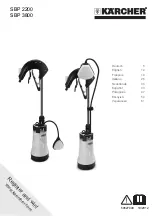
Be sure suction valve is fully open. Normally, discharge valve should be at least partially closed so
that flow will be controlled.
2.
Rotation Check
With motor uncoupled from frame, jog motor to check for proper rotation.
Rotation should be counter-clockwise when viewed from coupling end. Recouple when satisfied.
3.
Start
Pump is now ready to start.
5.2 Operational checks
Inspect pump carefully and frequently during the first few hours of operation. Mechanical seal may weep
slightly but should "run in" in a few hours. Be sure all auxiliary lines (cooling, flushing, sealing, etc.) are
functioning properly. Check pump bearings for excessive heating. Check motor for excessive heating.
Check complete unit for excessive vibration or unusual noise. Do not run pump at greatly reduced flow
because all the motor horsepower will go into heating the liquid in the pump and damage may result. Do
not run pump beyond maximum recommended flow since damage could result due to excessive wear on
the back washers (546).
Table 3: Maximum recommended flow
Pump
60 Hertz Speed
50 Hertz Speed
BP20
25 GPM
5.6 m
3
/h
20 GPM
4.5 m
3
/h
BP40
60 GPM
13.6 m
3
/h
50 GPM
11.4 m
3
/h
BP70
100 GPM
22 m
3
/h
80 GPM
18.2 m
3
/h
BP100
140 GPM
32 m
3
/h
115 GPM
26 m
3
/h
BP200
220 GPM
50 m
3
/ h
180 GPM
40 m
3
/h
5.3 Shutdown procedure
If pump is installed with a check valve, it can be shut down without closing any valves. When no check
valve is used, the discharge valve must be closed before the pump is stopped to prevent backflow
through the pump. If the pump is to be serviced, be sure suction valves are closed, auxiliary cooling and
flushing flows are shut off and motor is locked out before working on pump.
5.2 Operational checks
16
Model 3935 Installation, Operation and Maintenance Instructions
















































